Rich with a nutty flavor, dock seed flour is something every forager should know about. Many will know dock as a cooked green, but its seeds and the papery husk that surround them are one of the best known wild flours available to foragers. Today I'll show you how to make dock seed flour and a few ways I use it in the kitchen.
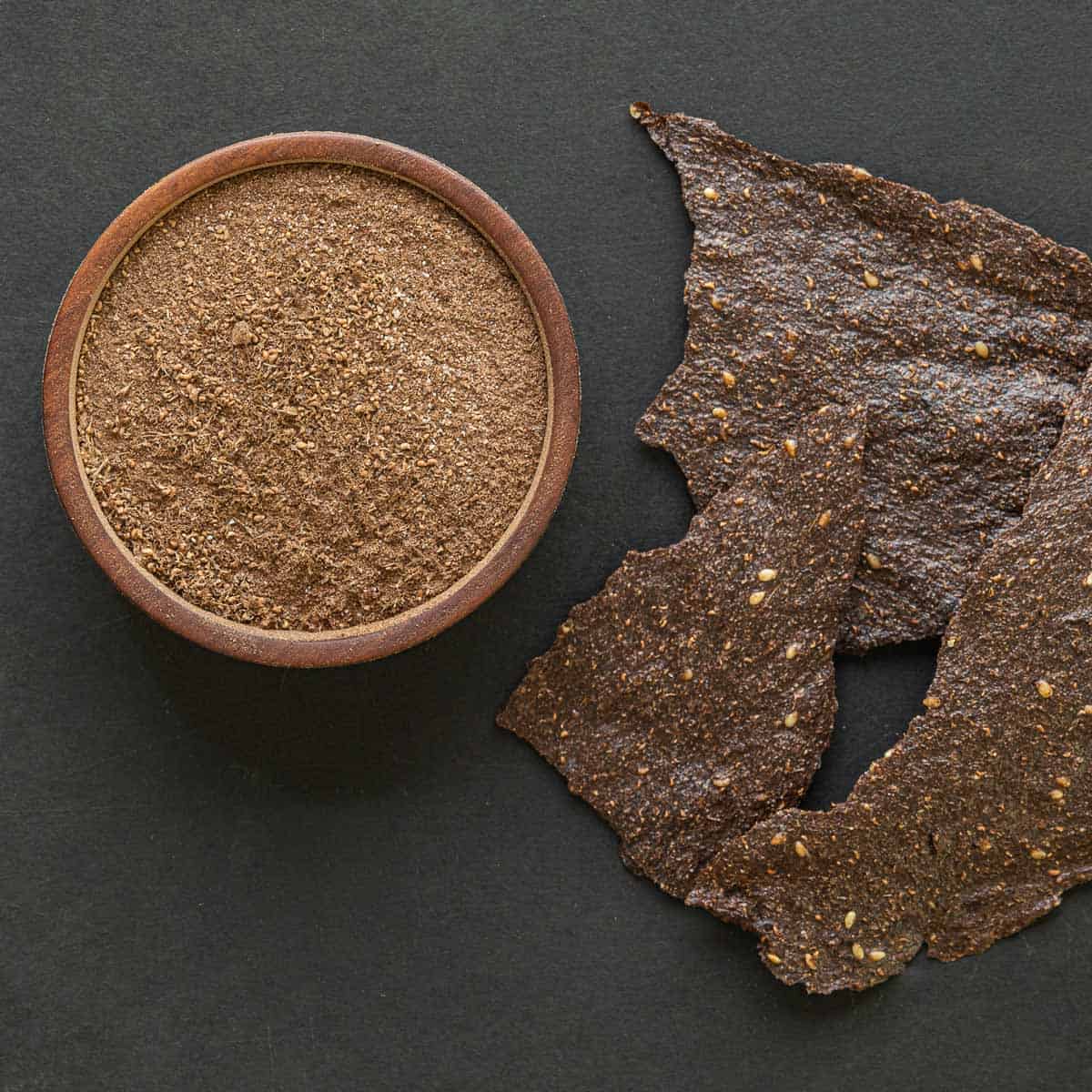
While there's many docks, curly dock (Rumex crispus) is the most commonly used and is what I recommend. Patience dock (Rumex patientia) should work too. One I don't recommend is bitter dock/broadleaf dock (rumex obtusifolius) pictured below.
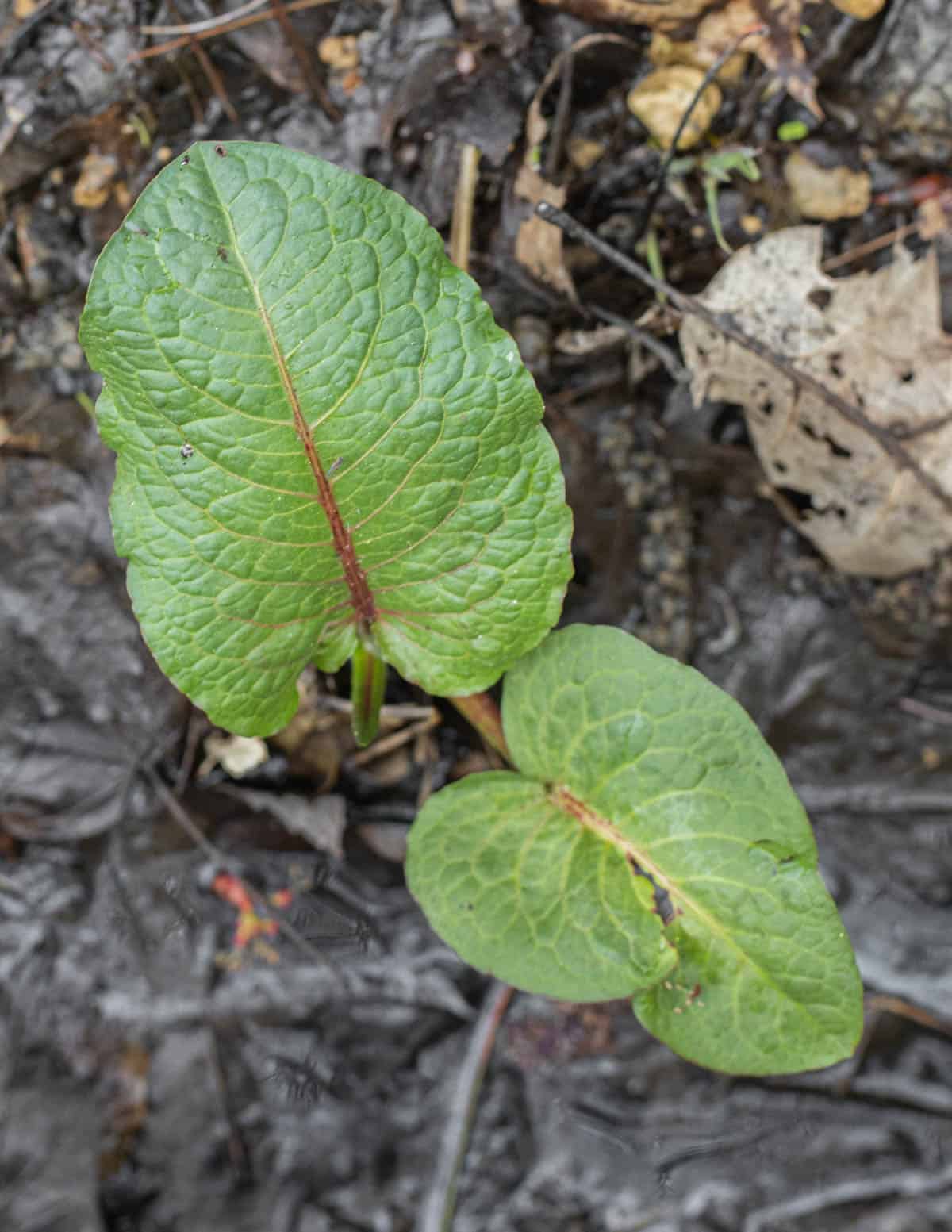
How to harvest dock seeds
Curly dock is a perennial that can be weedy or invasive in places. You can find dock growing in disturbed areas and around gardens and fields. After harvesting the young leaves in early spring it's just a matter of time before the seeds are ready.
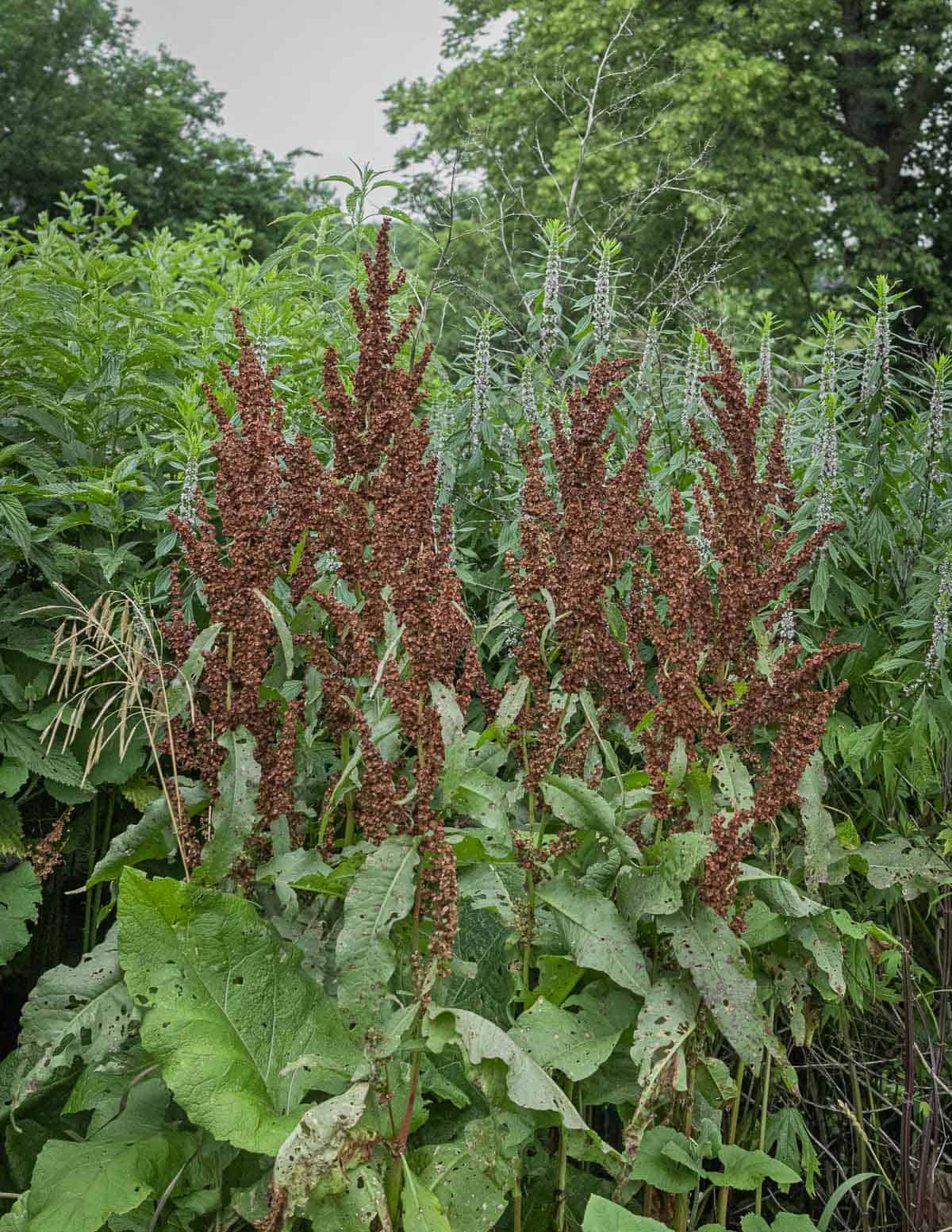
The seeds are borne on long stalks that can reach 3-4 feet above the basal rosette. Each small seed is held inside of a three-winged membrane or husk. It's easy to identify and can be gathered in large quantities.
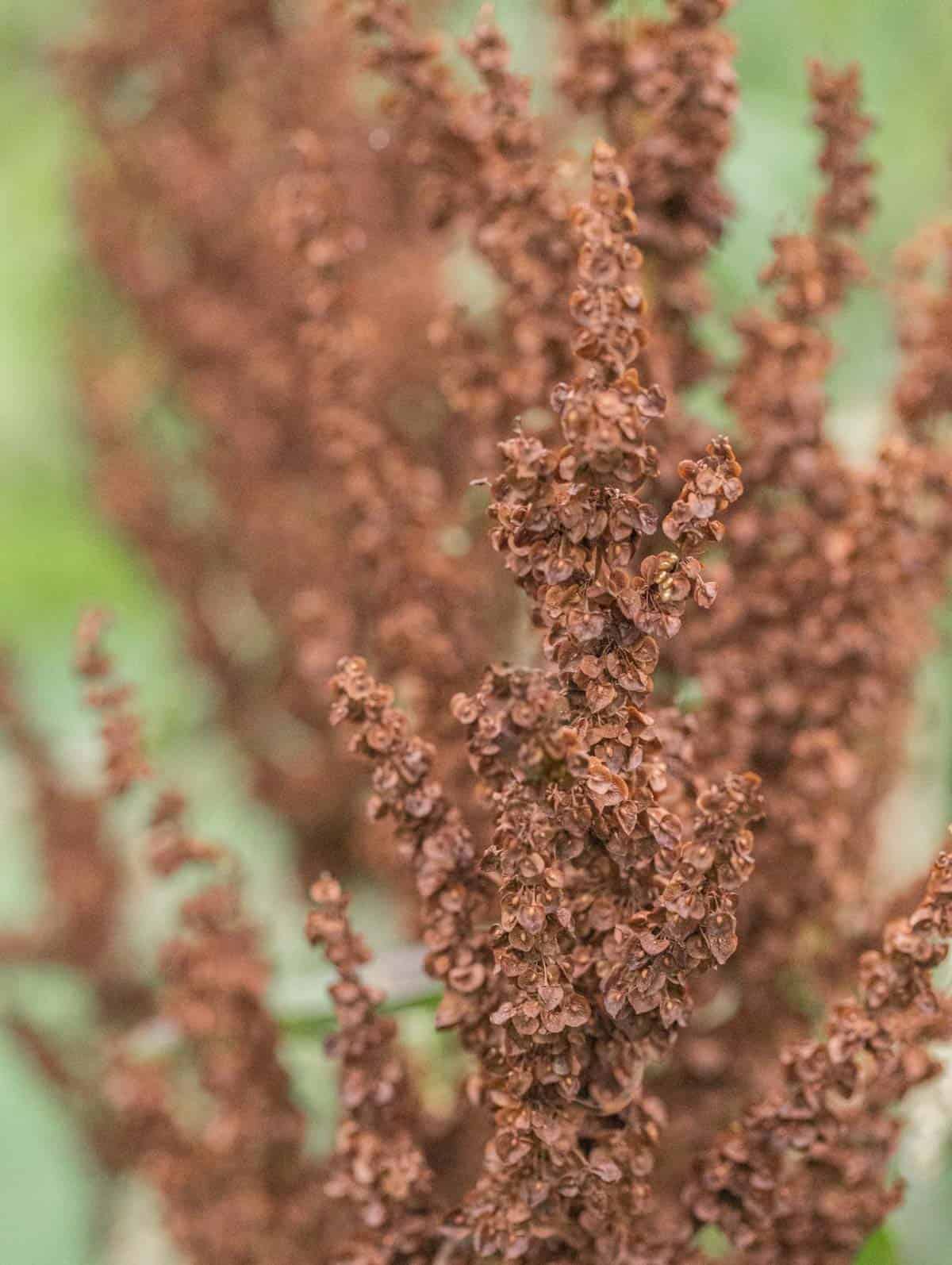
The seeds start out green, but will darken to a reddish brown with age. The dark brown stage is what you want for making dock seed flour. Green dock seeds are edible too, try adding a handful to a pot of rice as it cooks for a subtle tart flavor.
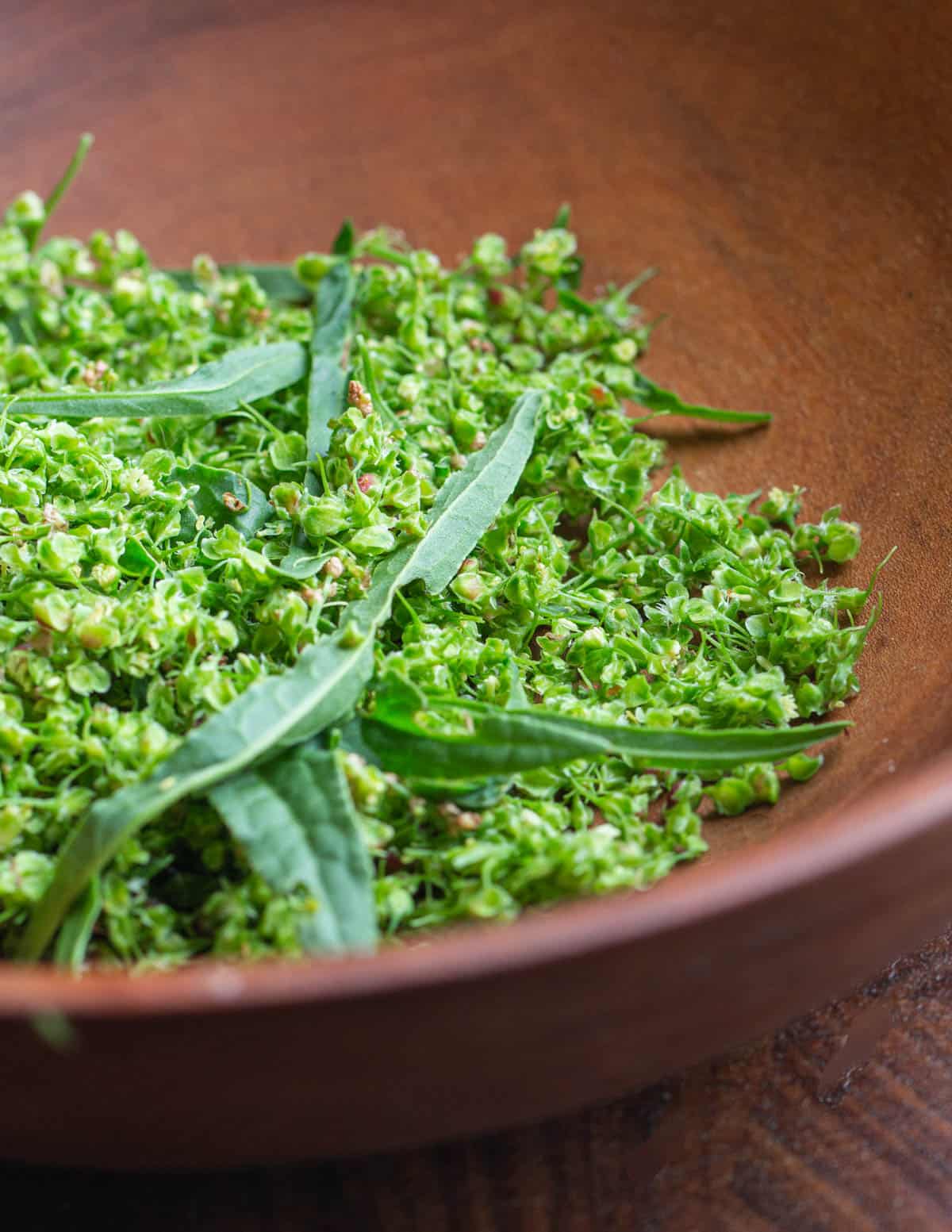

Harvesting dock seeds is easy: strip the seeds off of the stems and put in a paper bag. When you get home, the seeds should be picked over for green leaves and stems, which are discarded.
Below: stripping dock seeds from any remaining stems.
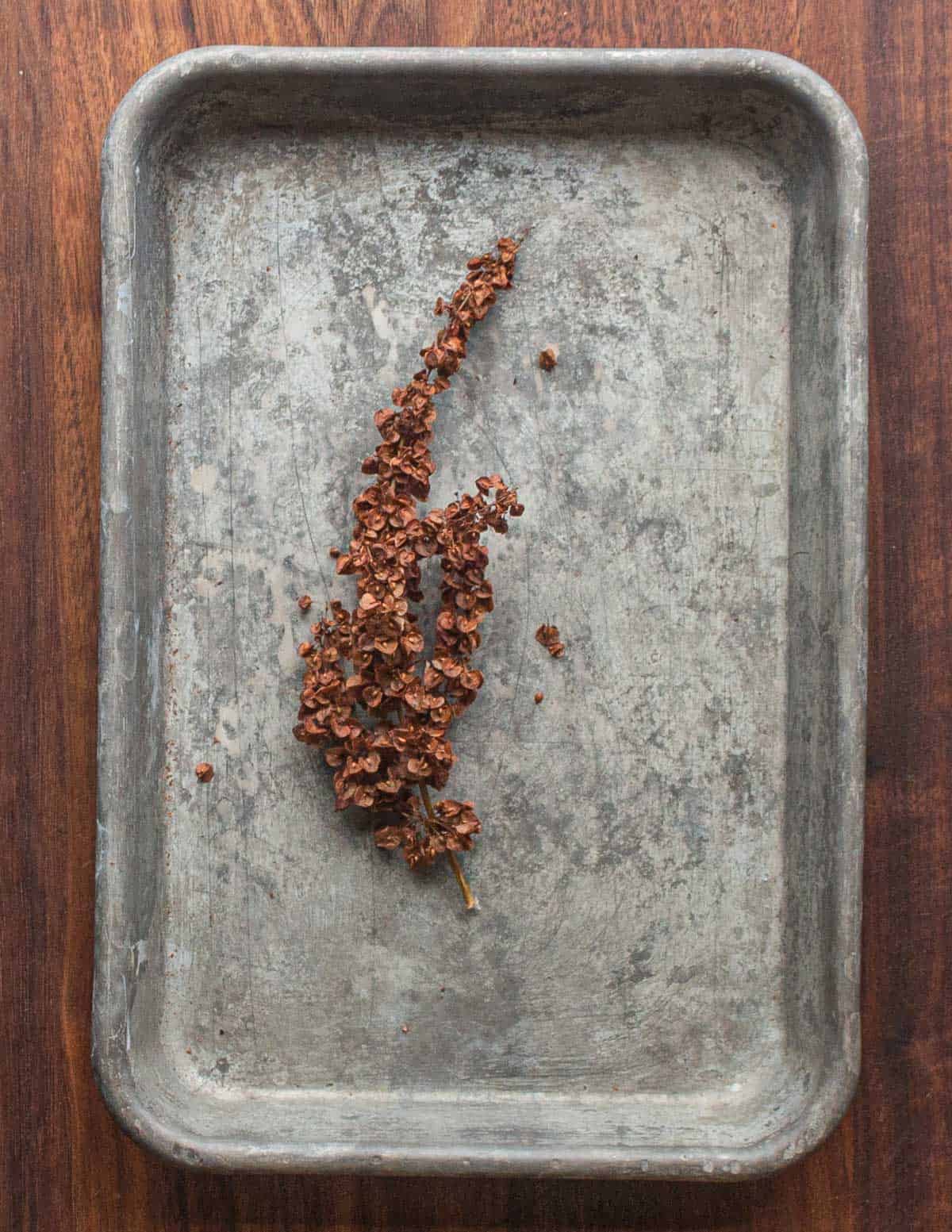
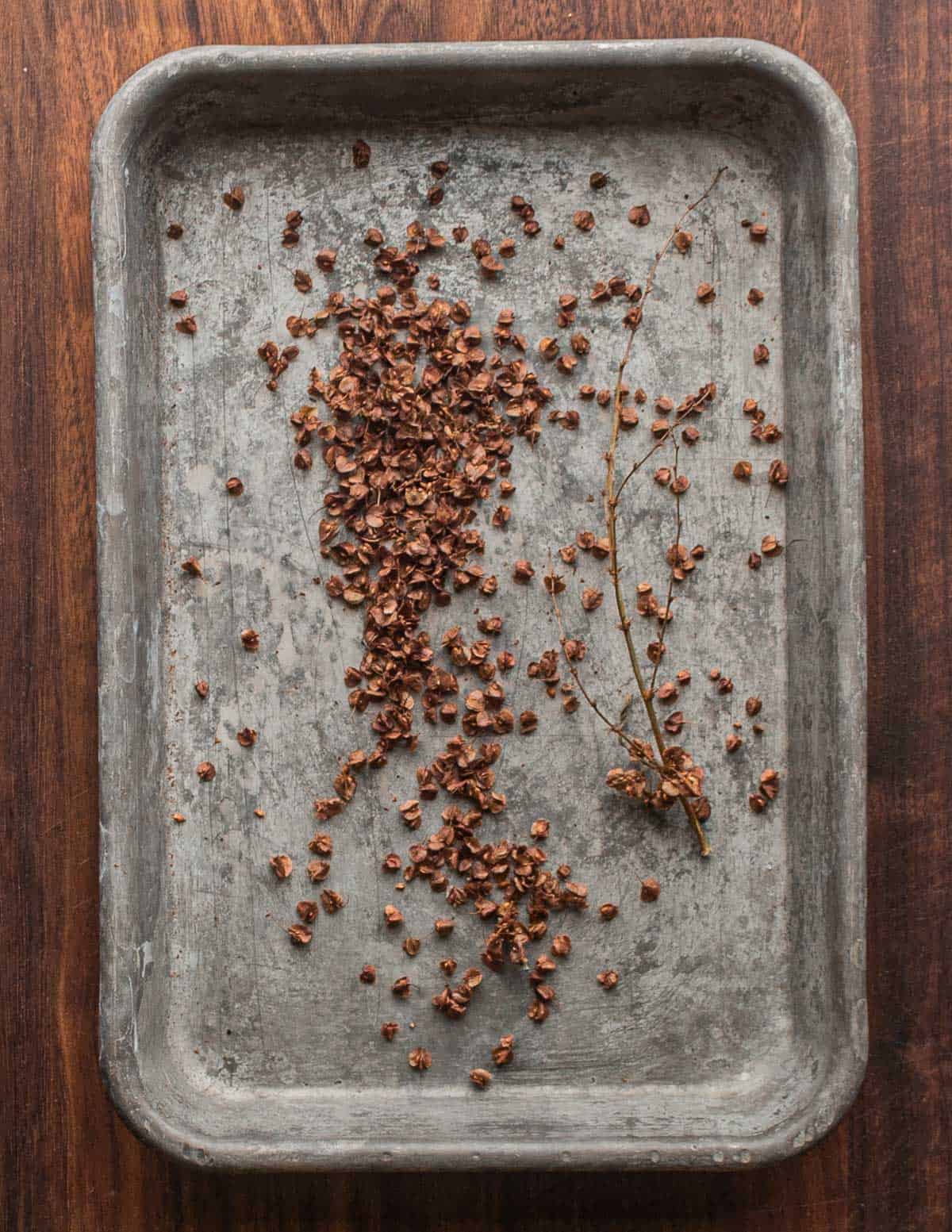
To make the seeds crisp enough to grind to a flour, they need to be dehydrated. Dry them on a high setting in a dehydrator (145 F) for 6-8 hours, or until cracker dry. Some people use a baking sheet in an oven set on low heat (~200 F) for a short time. After the seeds are cracker dry, store them in a pantry.
Below: dock seeds may need to be picked over for leaves, which I discard.
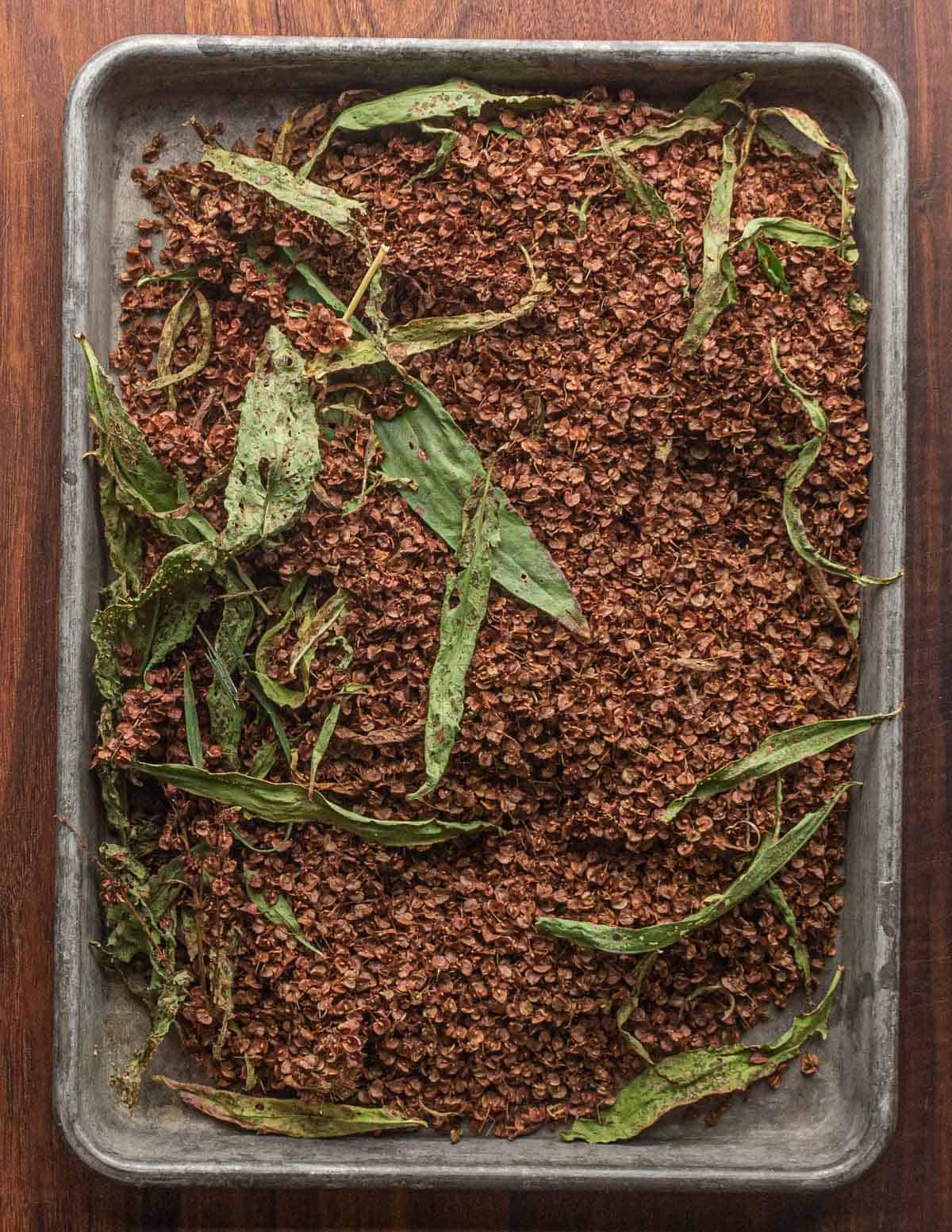
How to make dock seed flour
To make curly dock flour you'll need a spice grinder, vitamix or high speed blender. Some people mention using a mortar and pestle or food processor but that won't give very good results.
To make the flour, grind the seeds and their papery husk until as fine as you can manage. This is a bit confusing. To be very clear, you're not grinding up the literal seed.
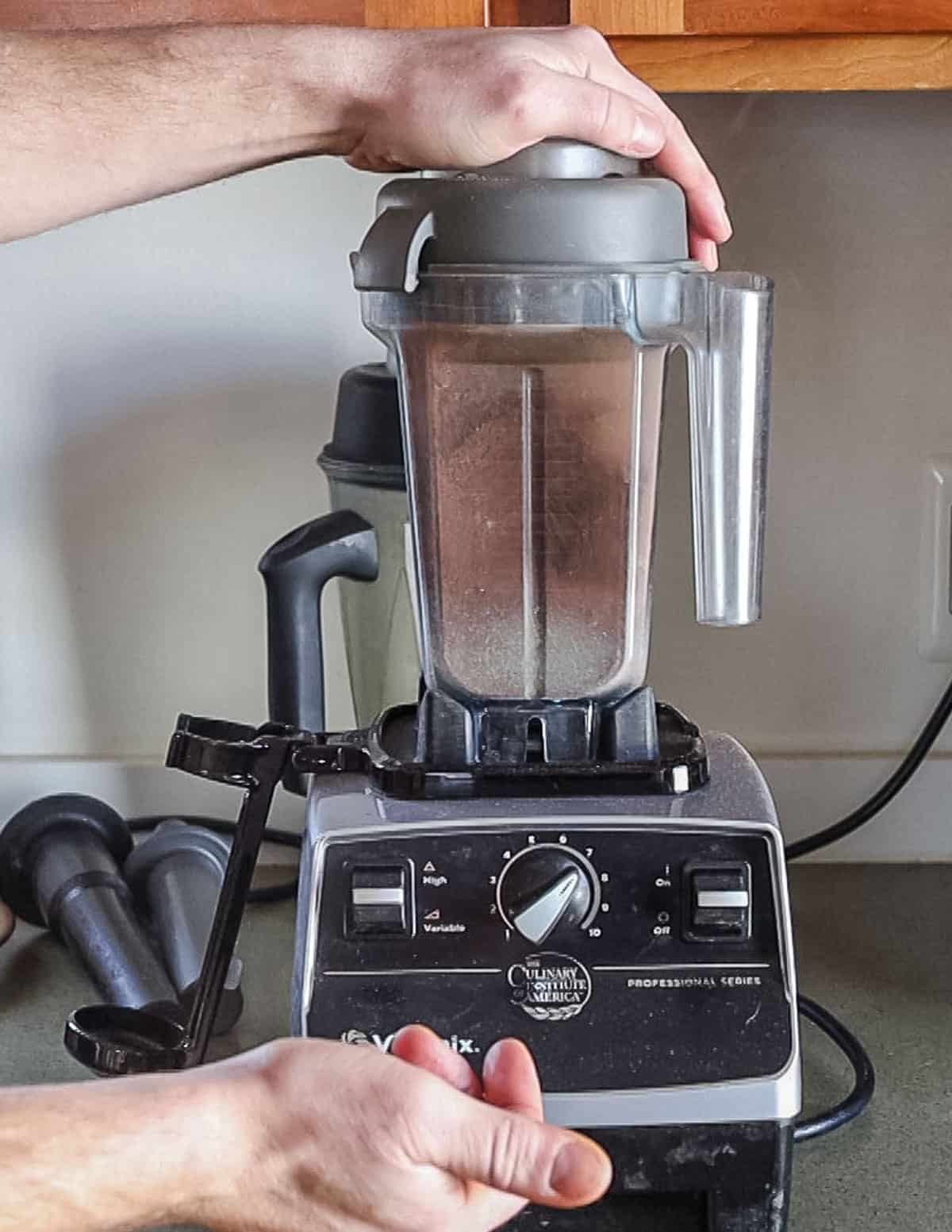
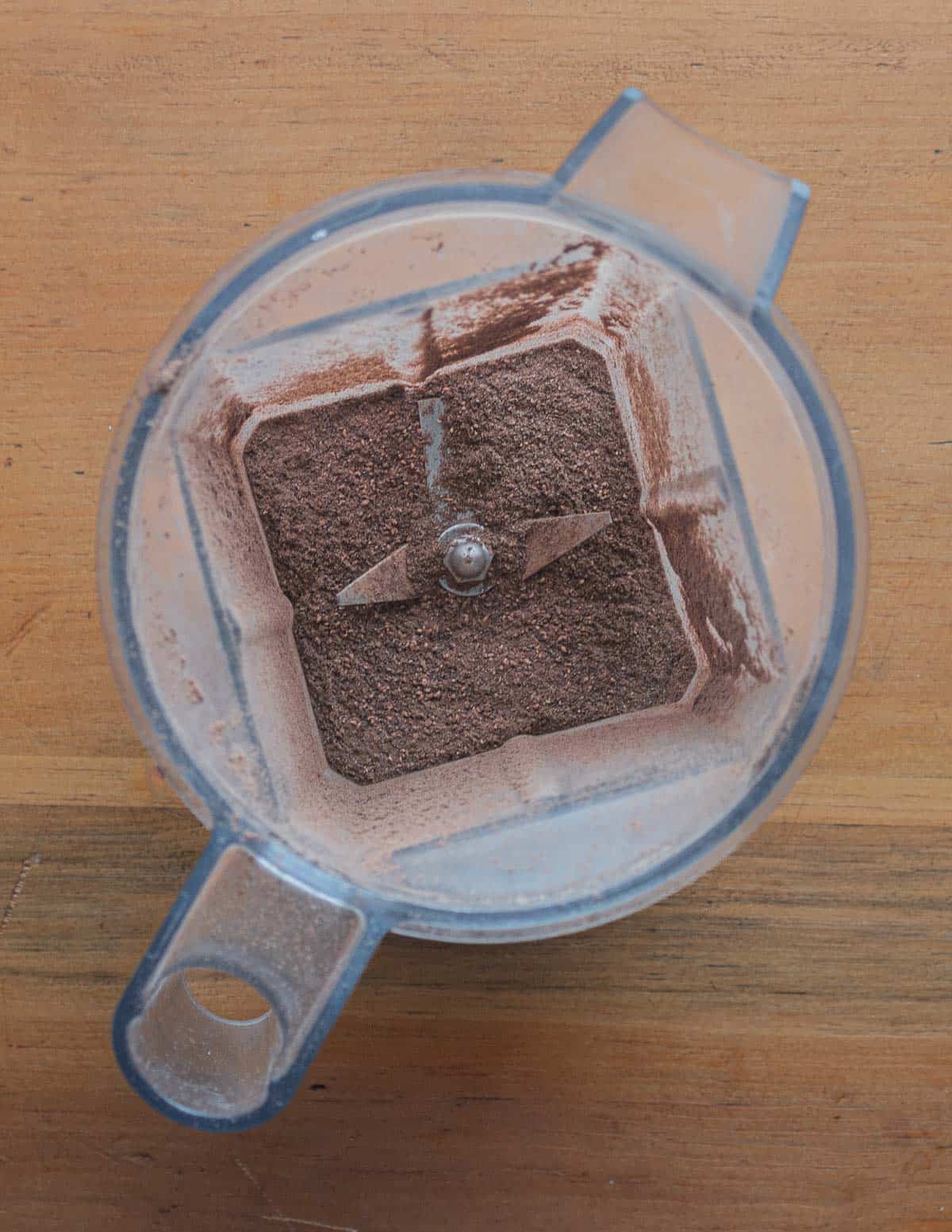

The majority of the flour will come from grinding the chaff. It follows from there that there's no need to winnow the seeds from the chaff-use it all and appreciate the extra fiber.
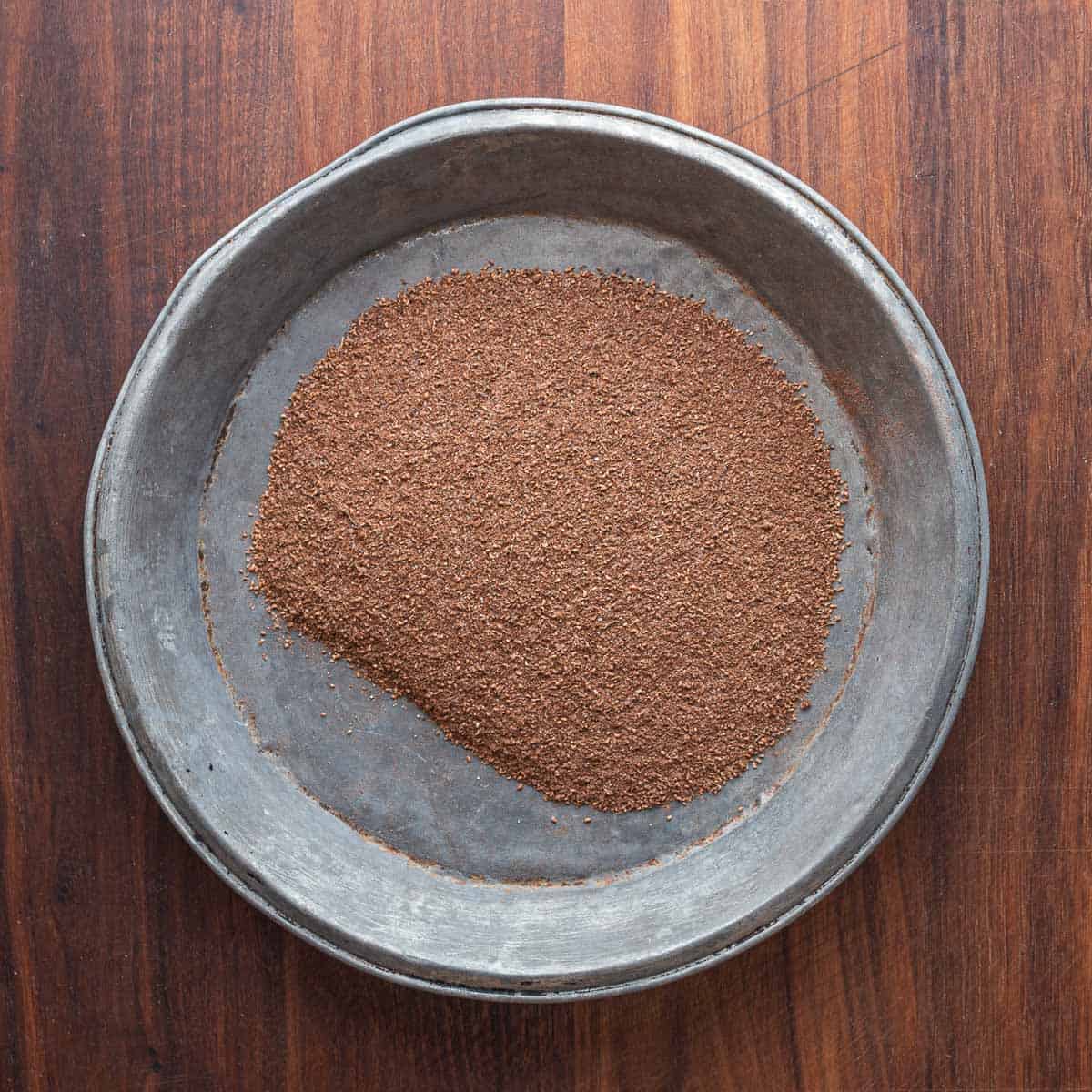
Below: You do not need to winnow dock flour or sift it.

It's unlikely that your seeds will actually be ground in the flour which means it's mostly husk. To help the flour not tear gluten strands in baking recipes, I recommend using the soaker method. To do that, pour ¼ cup boiling water over ½ cup of dock flour, mix, cover with cling film and allow to cool before using in recipes.
Dock seed flour recipes
Dock seed flour tastes a little like buckwheat as the two plants are related. It can be substituted in baking recipes for around 25% of the flour-sometimes a little more if you're not making bread. The flour contains no gluten, so it's best used in recipes like crackers, pasta or brownies where a denser texture can be ok.
Below: dock seed crackers.
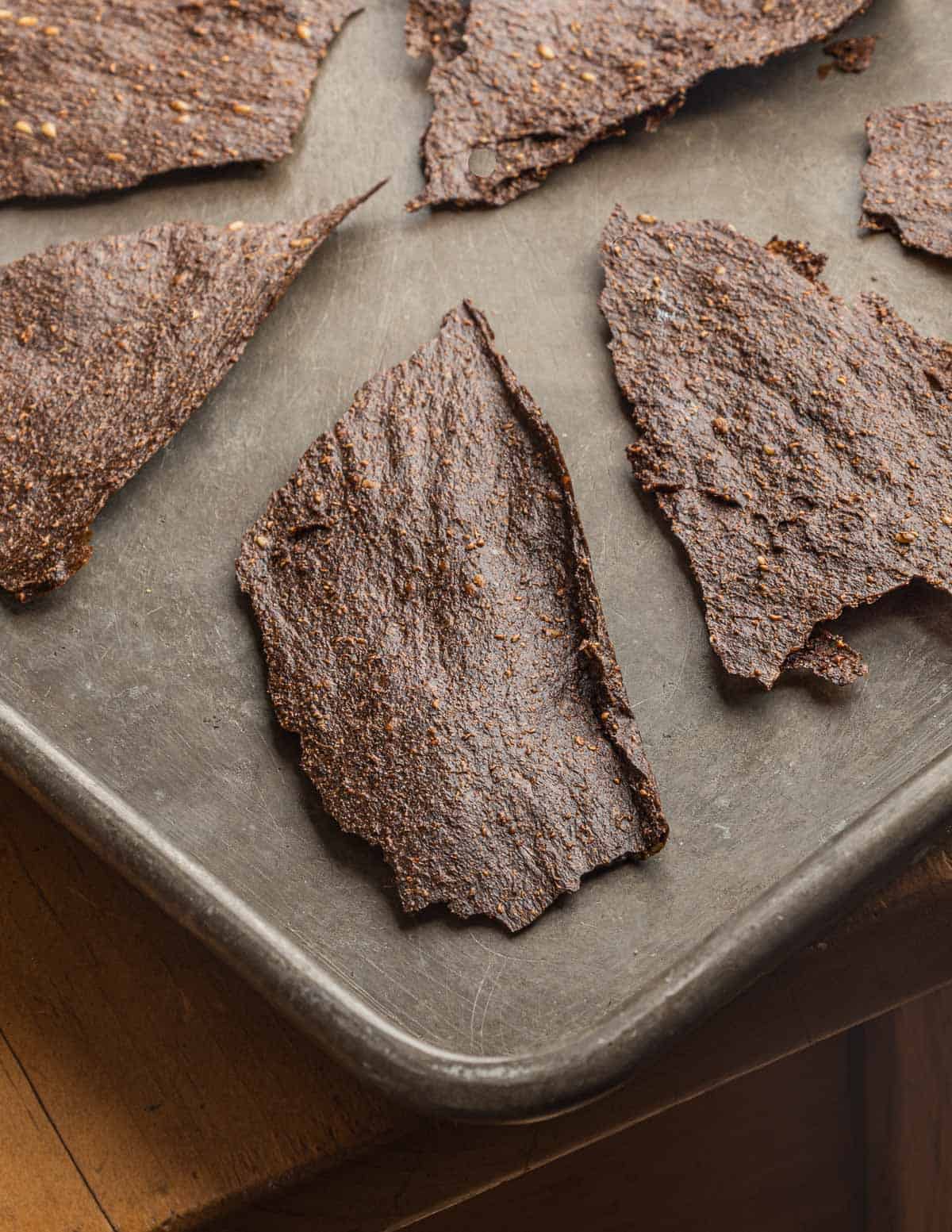
Below: dock seed pasta. Combine 2 cups of flour with ½ cup dock flour, 5 eggs, 1 teaspoon salt and ½ cup water. You can use the same proportions (or even more) for dock seed oatmeal or polenta.
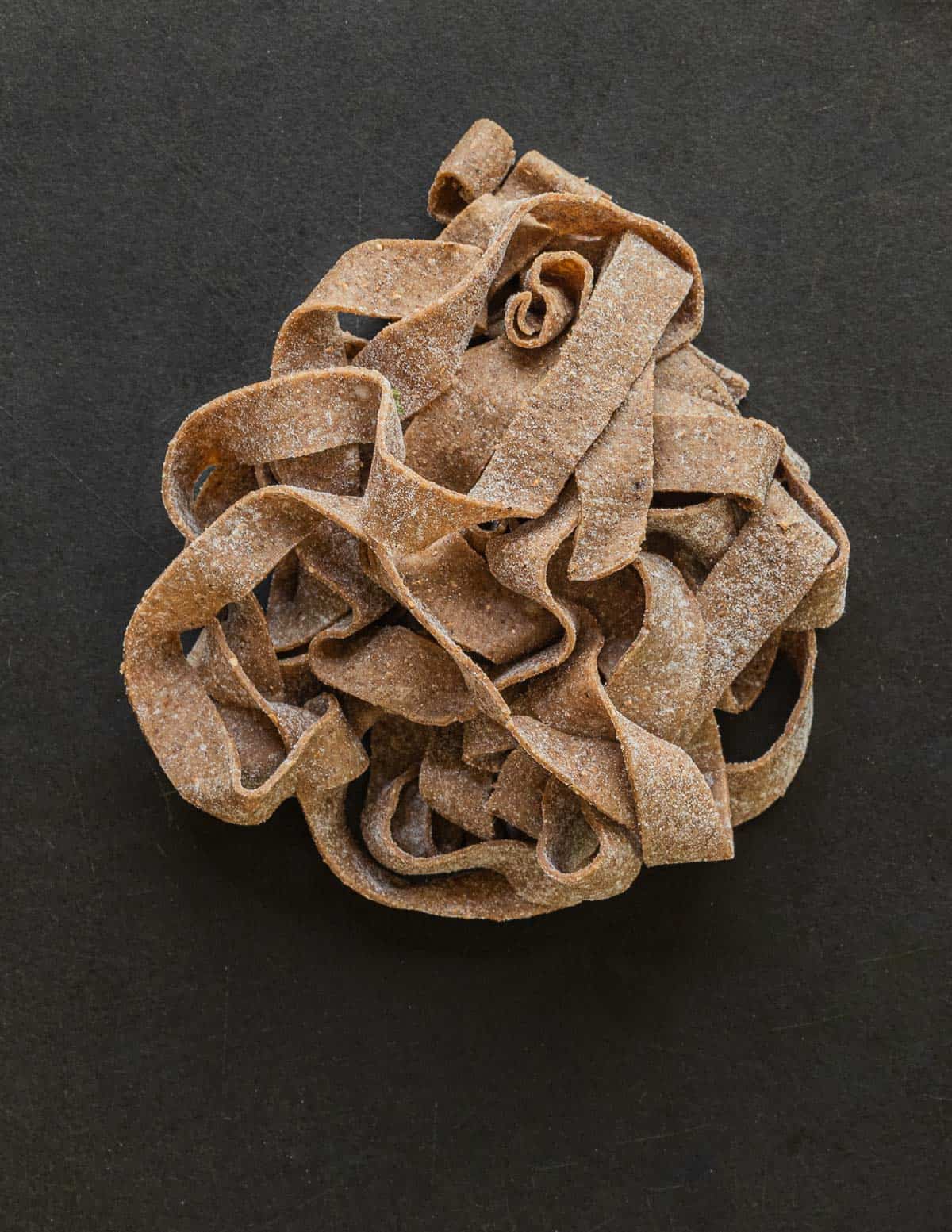
Below: dock seed pasta with brown butter, morels, salsify tips and lambs quarters.
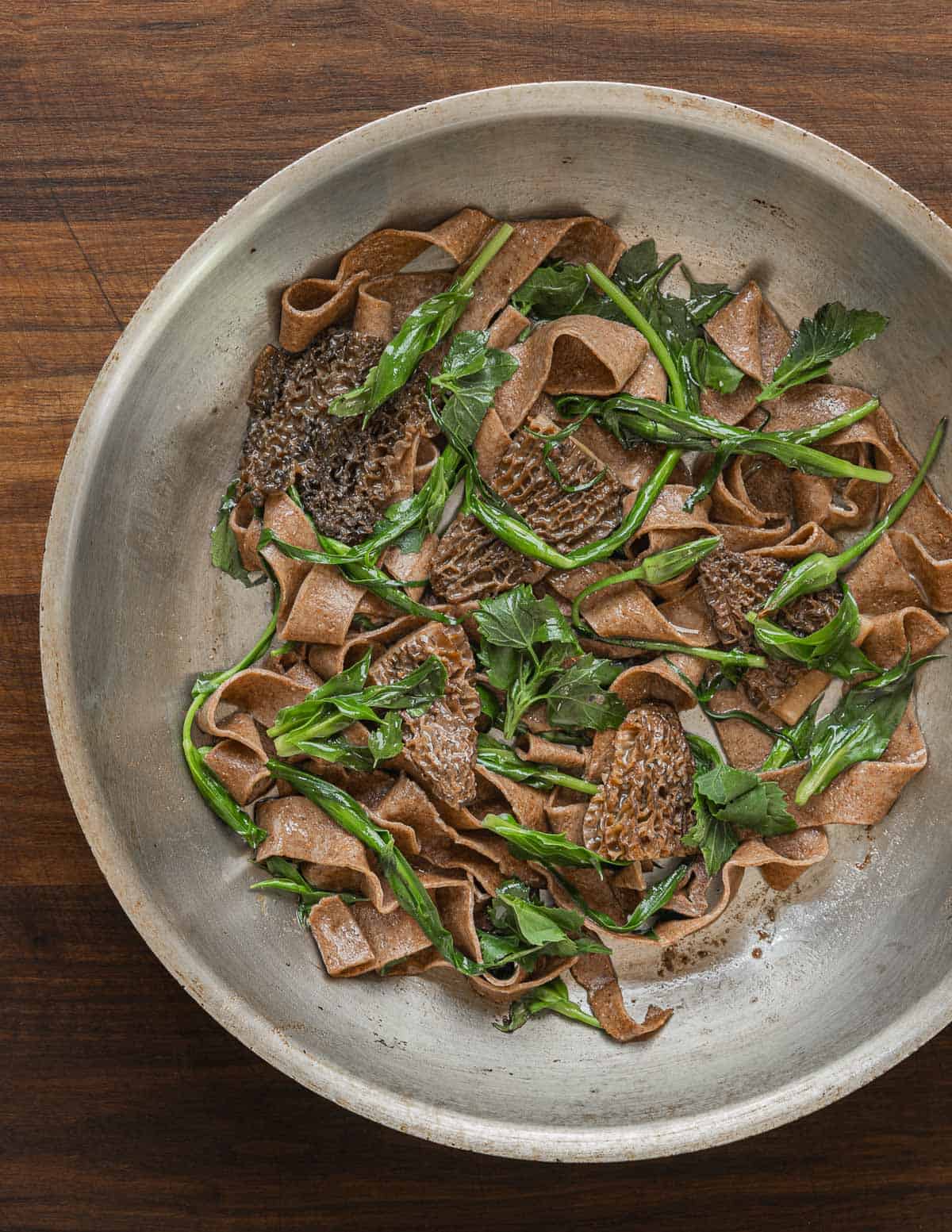
Dock Seed Crackers
Dock seed crackers are the most popular recipe for dock flour. They have a subtle taste of buckwheat and are a great excuse to make a cheese plate or charcuterie platter. I have two recipes for you to try.
Classic Dock Flour Crackers
Make a dough using dock flour and wheat flour. Roll the dough out until as thin as possible, then cut into shapes as pictured below and bake at 375 F for 15-20 minutes.
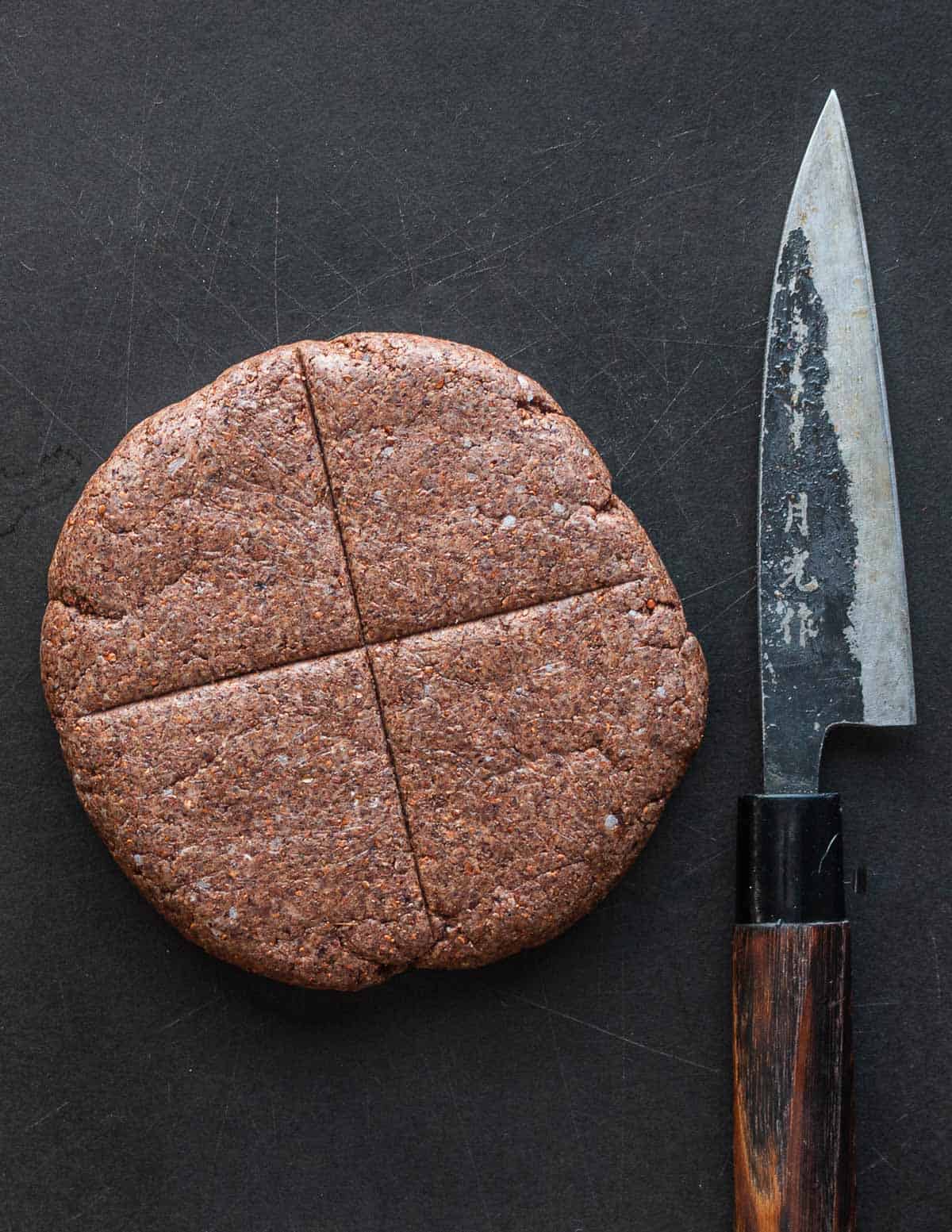
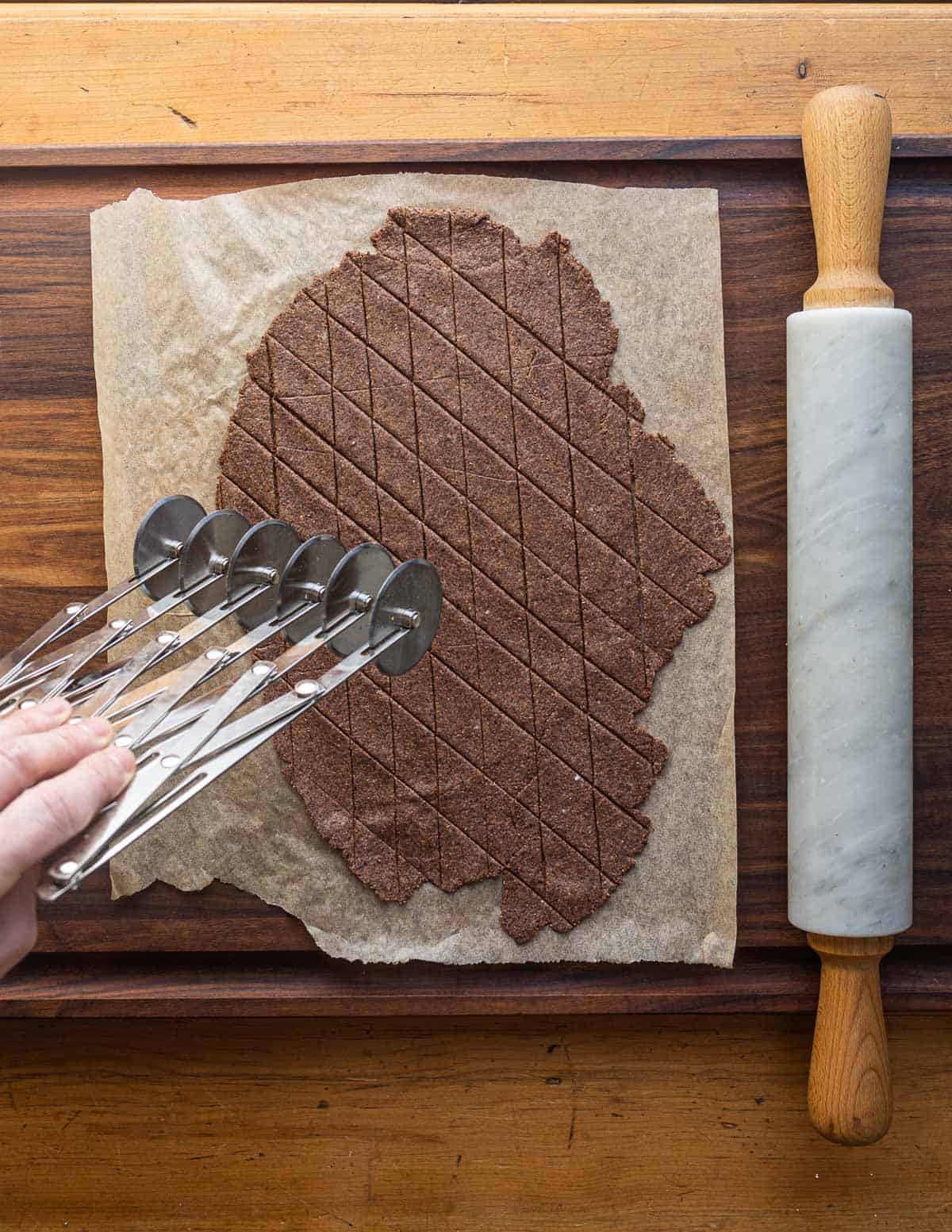
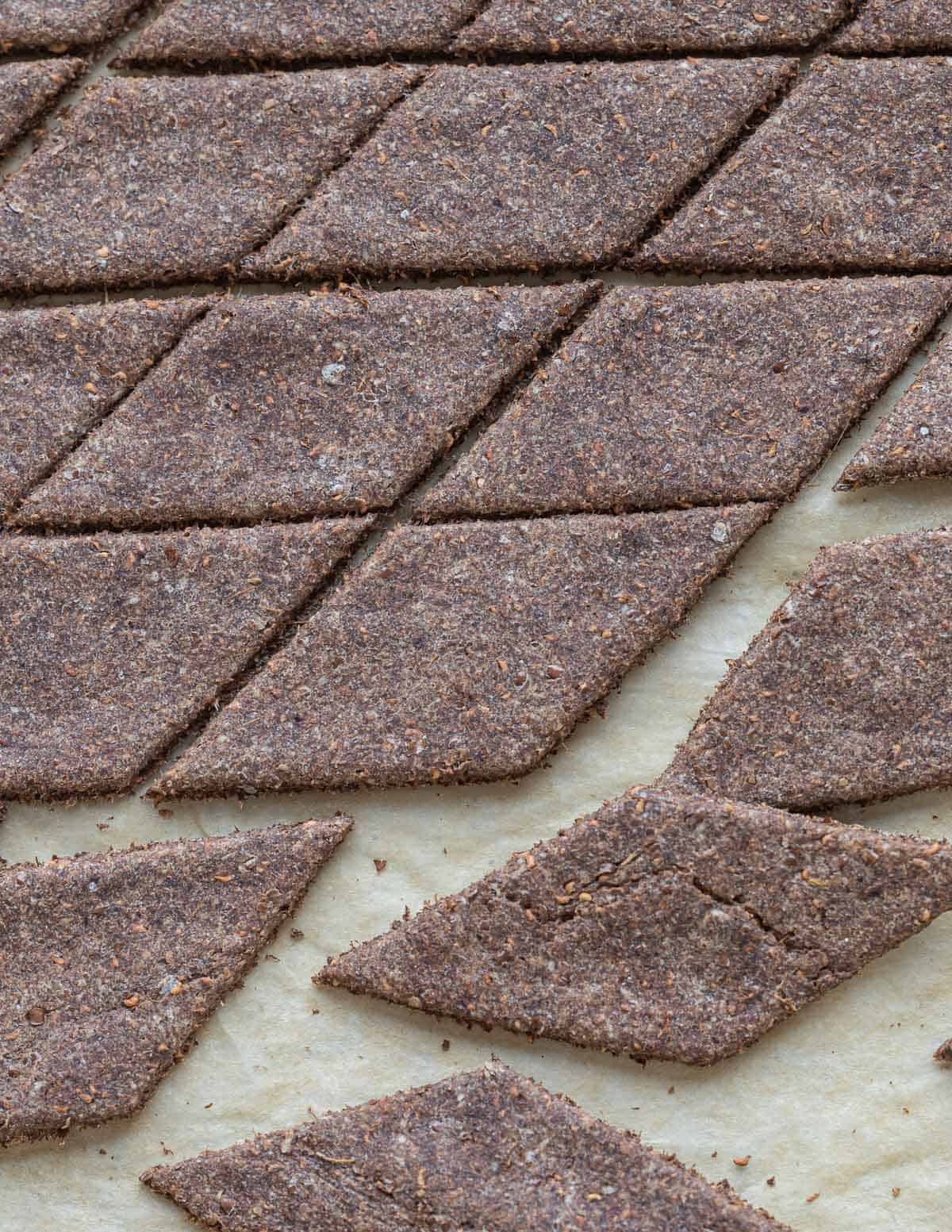
Gluten Free Dock Flour Crackers
My favorite version is gluten free and made with acorn starch instead of flour. Cook dock flour and starch or cornmeal with water, oil, a pinch of salt and maple syrup. Spread the paste on a baking sheet and cook at 300 F for 45 minutes. After drying they can be deep fried to make "vegan pork rinds".
Below: cooking a paste of dock flour.
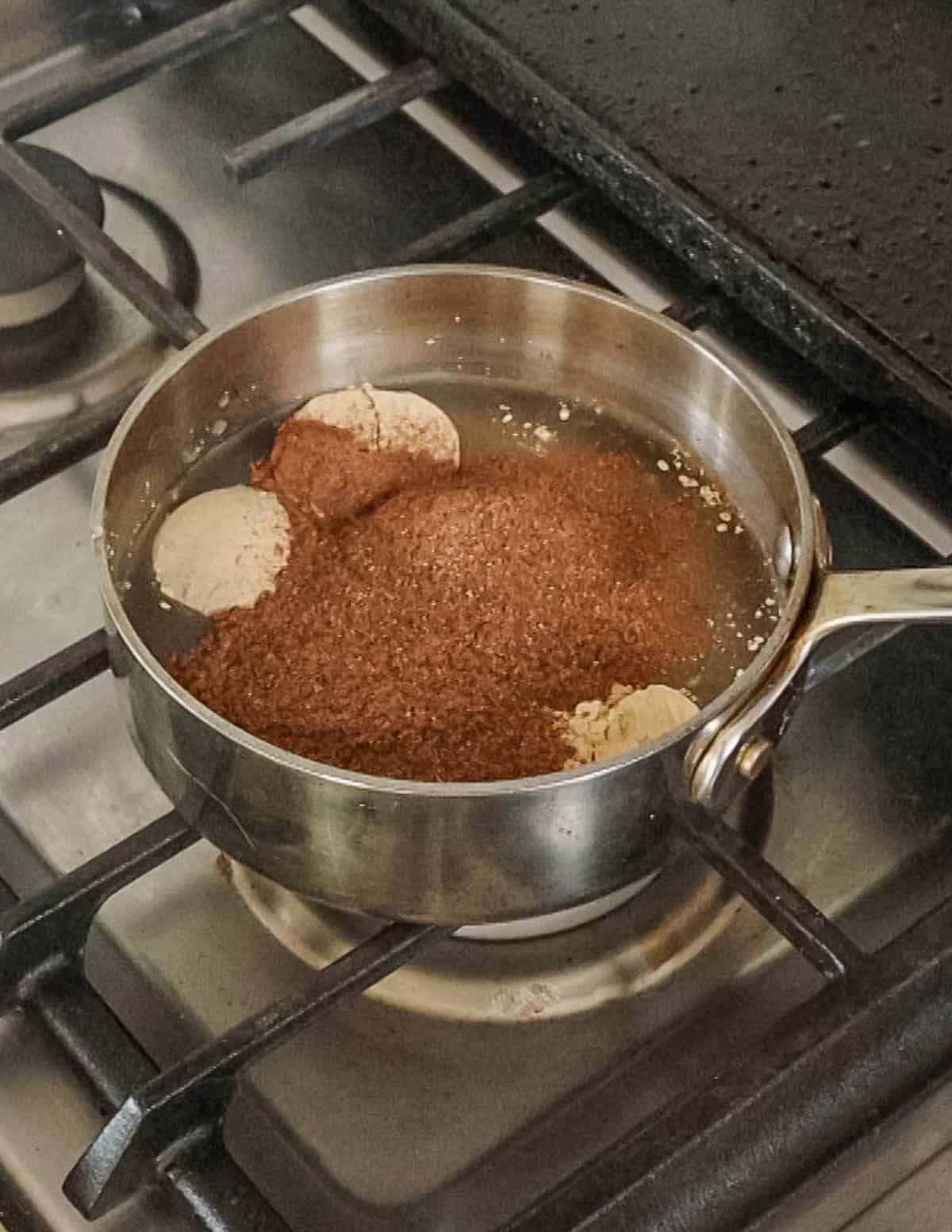
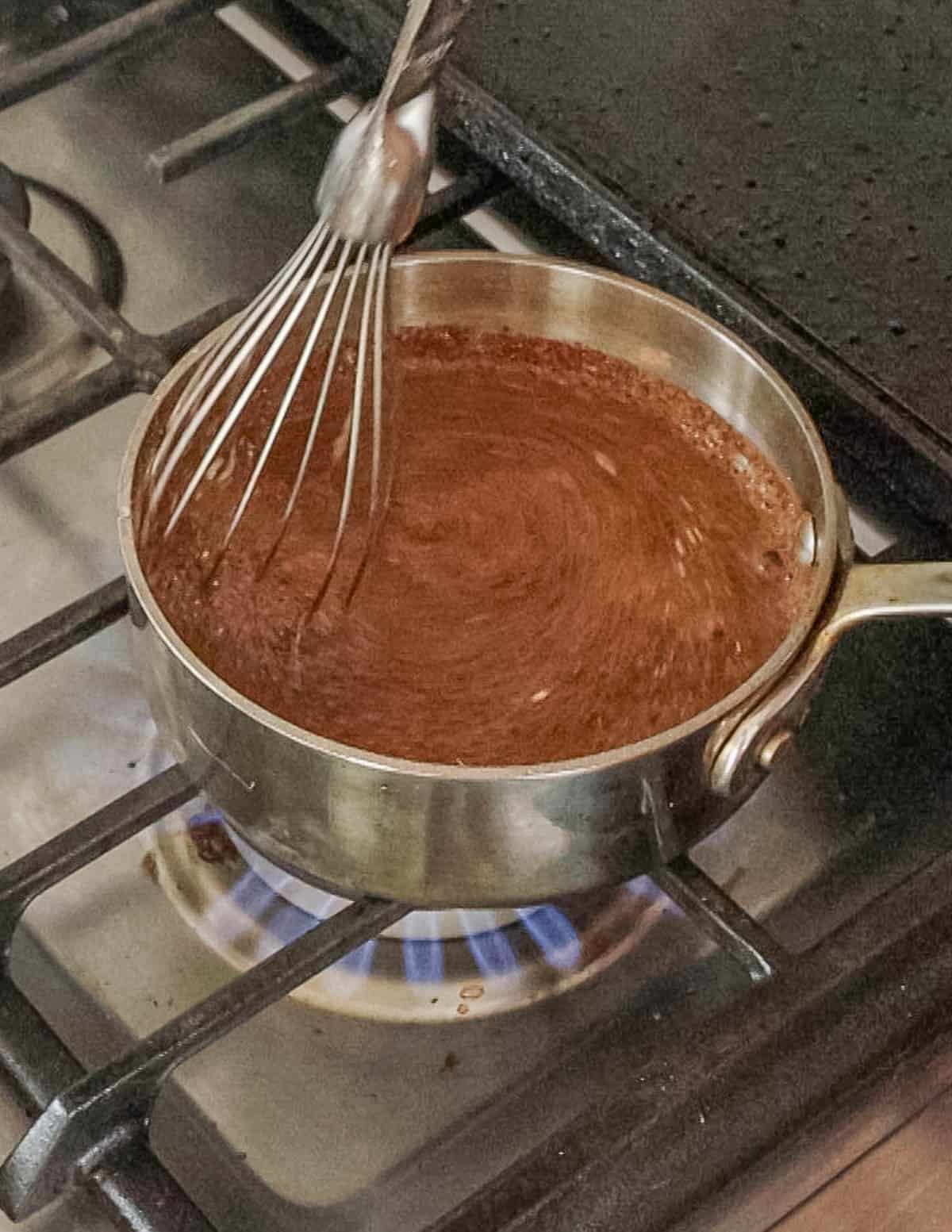
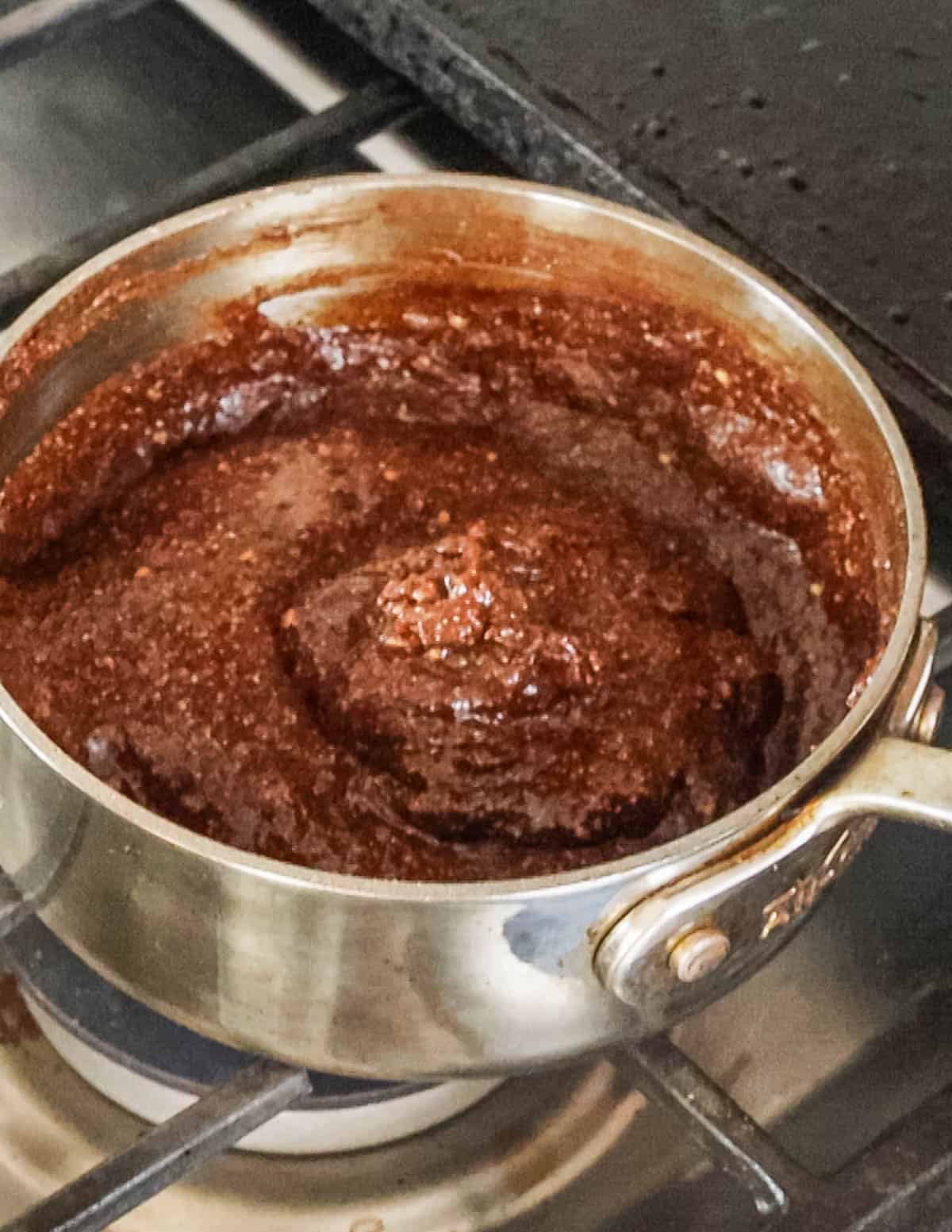
Below: Drying the sheet of dock paste and breaking into rustic crackers.
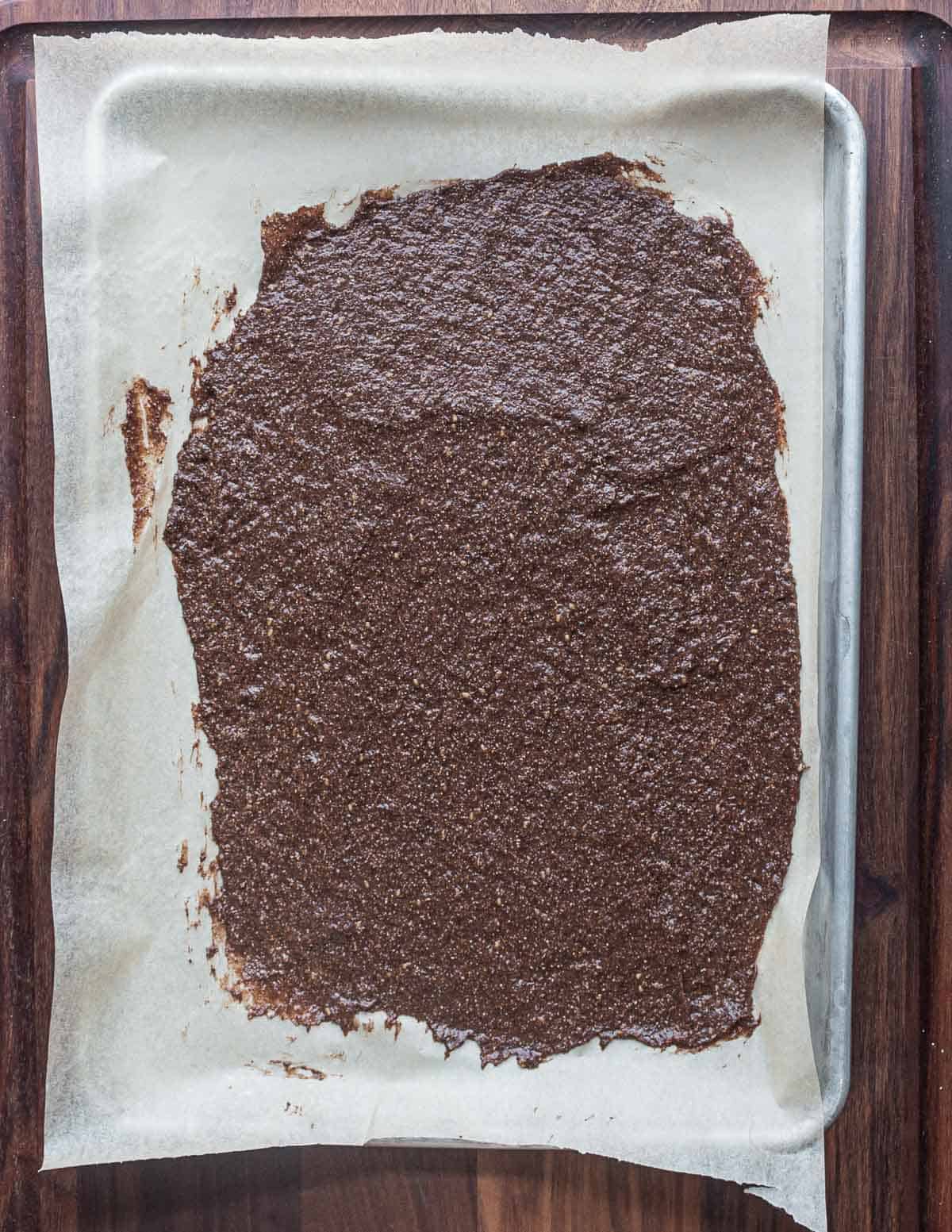
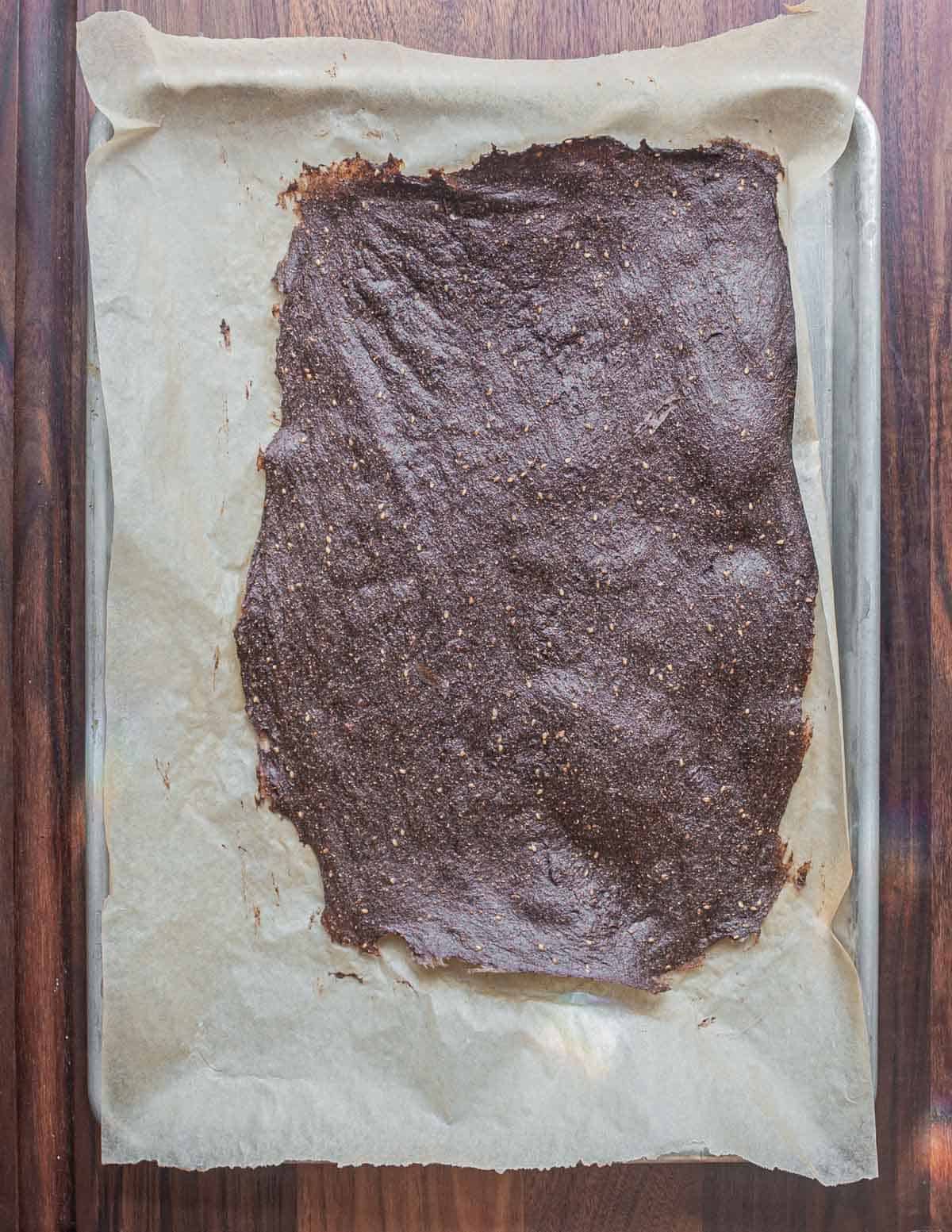
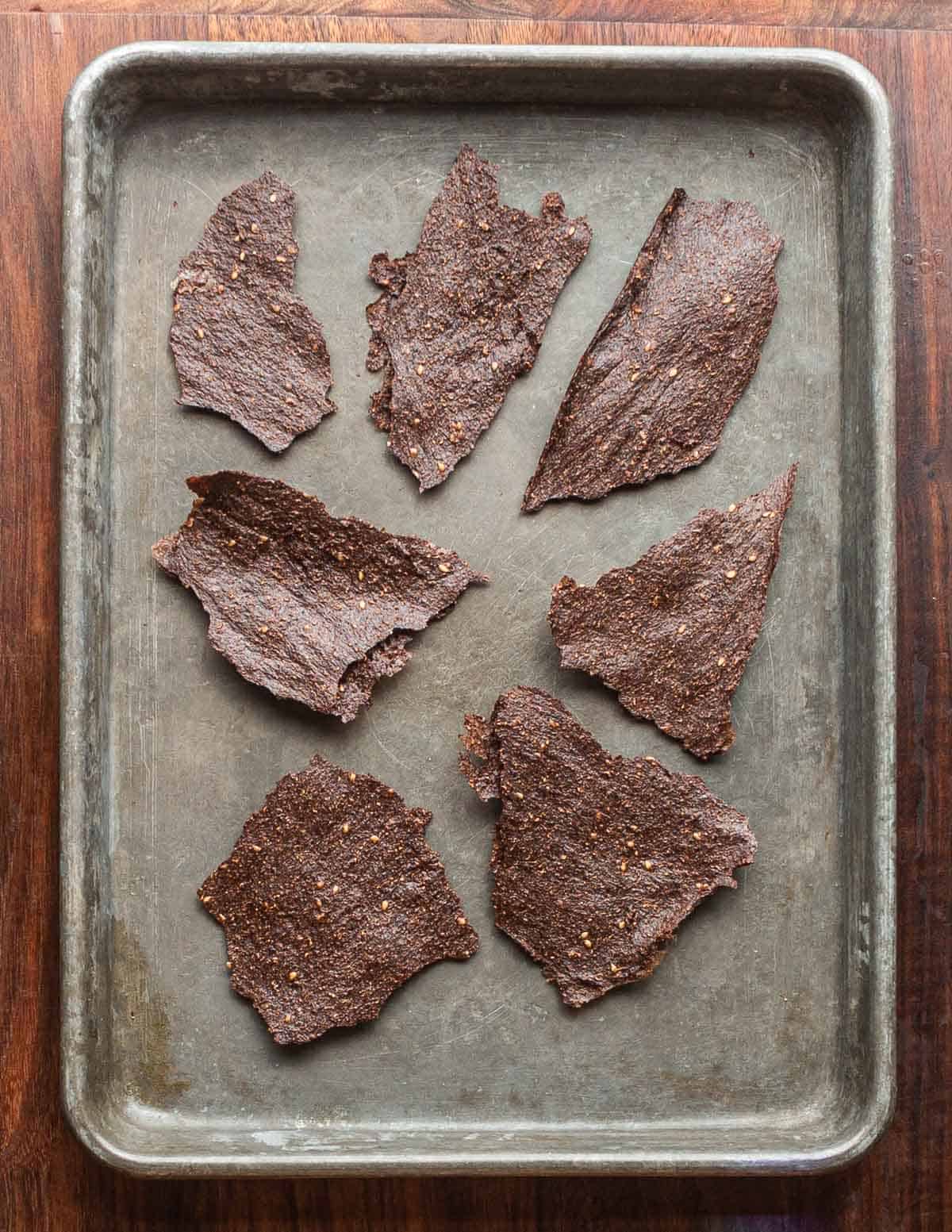
More Curly Dock Recipes
Dock Seed Crackers
Equipment
- 1 baking sheet
- Parchment paper as needed
- 1 dehydrator or oven
Ingredients
- ⅓ cup dock flour
- 3 tablespoon acorn starch or cornstarch or ¼ cup fine cornmeal
- 1 tiny pinch kosher salt
- 1 cup water
- 1 tablespoon cooking oil
- 1.5 teaspoons maple syrup
- 1 teaspoon lightly toasted sesame seeds optional, a garnish
Instructions
- Preheat the oven to 300 F. Lightly toast the dock seeds for few minutes in a pan on medium heat before grinding.
- Combine all ingredients in a small saucepan of roughly 4 cup capacity. Whisk to mix, then turn the heat to medium-high and bring to a simmer.
- Cook the mixture until a thick paste forms and the starch has activated.
- While it's still warm, spread the paste as thin as you can on a baking sheet lined with parchment or a silpat, attempting to keep it in a single, even layer.
- Bake the crackers for 45 minutes, or until brittle. Cool and store in container with a tight fitting lid in a pantry. They'll last for weeks and can be refreshed in a warm oven if they lose their crunch.
Video
Notes
Classic Dock Crackers
Ingredients- 52 g (⅔ cup) dock flour
- ½ cup (4oz) hot water
- 1 cup (160g) flour
- 1 T (16 g) maple syrup
- 2 Tablespoons (22 g) unsalted butter or oil
- ½ teaspoon kosher salt
- Pour the water over the dock flour in a small bowl and mix to combine as well as you can. Cover the bowl with cling film and allow to cool.
- In a larger mixing bowl, mix the maple syrup, and salt. Add the cooled dock flour and mix.
- Add the all purpose or other flour and mix gently, then mash the butter or oil into it with a fork to form a soft dough. The flour mixture will seem crumbly, press it together with your fingers to see if it holds shape, add another tablespoon of warm water if needed until it comes together.
- Flatten the dough into a disk, wrap in cling film and refrigerate for 20 minutes to hydrate.
- Roll the dough out between two pieces of parchment paper on a cutting board until very thin, roughly ⅛th inch. Take your time and make sure the dough is an even thickness. Remove the top layer of parchment and gently cut the dough into strips. Next, make diagonal cuts (refer to the video) to create diamond shapes.
- Bake in a preheated 350 F oven for 15-20 minutes or until the crackers are crisp and snap when broken. Cool and store in a covered container at room temperature. If the crackers lose their snap, gently warm them in a 250 F oven for 10 minutes to refresh the texture.

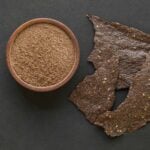
Bo
Hey Alan, I notice a lot of people saying online that their dock seed flour (presumably curly) had a slightly bitter taste - have you experienced that at all?
Alan Bergo
Yes. But as it’s usually used as 30% of the wheat flour in a recipe it’s not a big deal. I’ve never had anyone complain about something made from dock seed flour. Obv some varieties could be a little more bitter than others.
On a related note, I spoke with a guy who was leaching the seeds he had winnowed and was obsessed with getting out as much bitterness as possible. It tasted good, but part of what makes dock flour so useful is that it’s easy to harvest and process in quantity.
Bo
gotcha, thank you!
Gabi
Dear foragerchef,
Thanks for all the information and recipes. I just made your classic crackers and they are delicious!
BUT I used the seeds of rumex obtusifolius - curly dock is very hard to find where I live.
Why don't you recommended those in this artice?
Greetz from Austria,
Gabi
Alan Bergo
I don't recommend using them because I haven't used them personally, and I only write about things I have solid personal experience with, which seems to be harder and harder to find these days. Either way if they work for you-great!
Trudy Fair
I've had curly dock growing below the diversion terraces in my pastures for 30 years. I went out yesterday and zipped off a baggie full of seeds and just found your recipes and site. Thank you for the information. I have a variety of grasses and plants on my farm, and I look forward to using them and foraging more.
Trudy - Parker County, TX ( North Central west of Fort Worth
Jordan Best
Can I wash them before grinding? There are a lot of little bugs/spider webs in the area where I harvested the seeds.
Alan Bergo
Yes but you'll need to dry them bone dry again.
JACQUELYN SAURIOL
I am having trouble distinquishing between bitter dock and curly dock leaves, but I went ahead and made some flour with those plants growing in my yard. They were indeed too bitter. But I am wondering if one could do a leaching process to reduce the tannins/bitterness in this flour by a process akin to how one leaches bitterness from acorn flour. thank you
jackie in Portland OR
Alan Bergo
Hi Jackie. Curly dock is so plentiful when you find patches of it (at least it can be) I wouldn't see the benefit of trying to leech bitter dock seeds.
Lorenzo Tavani
I’ve now had both styles of these crackers and they’re both awesome in their own ways. I love how versatile the crackers are, and they sure beat the hell out of the over priced ones at the store 🤙
Alan Bergo
Glad I could show you the regular ones too. Need a rolling pin though 😁.
Moreno
Dec, 25th, Hi Dear Sir !
I surely rate what's explained in regard of the plants above.
So, three 👍👍👍thumbs up for sure.
Greetings from Switzerland.
I wish you a splendid New Year
Stay well
jill
I made dock seed flour per your recipe last year and loved it, so excited to harvest more! Just curious, have you tried sprouting the seeds before dehydrating? Something I'm considering this round, looking for tips.
Alan Bergo
I haven't.
Dan F
Boy, that batter is some nasty looking stuff, but also amazing! I wasn't prepared for it to thicken like it did... thin and crispy! The flavor reminds me quite a bit of the old Ralston cereal that my Mom used to make for me on cold winter mornings before leaving for school.
The seeds are just at the turning point right now. You can still find some green seeds, some that are turning, and some that are completely brown and dry. I had no problem at all getting a couple of quarts of finished flour.
Kris
These dock seed crackers are delicious! Also, I'm so impressed at how crispy they stay in a container. Easy to make and perfect snack
Alan Bergo
Glad they worked for you Kris.
Brenna
Have you ever tried Rumex Verticillatus (swamp dock)? I was wondering if it would be edible or one to avoid. Thanks!
Alan Bergo
As long as they make seeds in quantity that makes an efficient harvest I would try them.
Peggy
I'm really looking forward to trying these recipes! Last year I couldn't find dock--and this year, when I found it, I jumped the gun and harvested it before the seeds had a chance to ripen and darken--Duh..! So now I have a bunch of green-seeded dock! Can I keep it and use it when the seeds darken?? Thanks in advance!
Alan Bergo
The seeds won't darken. I have a friend who likes to add the green seeds to rice as it cooks. I would go and find some seeds that have darkened on their own as they stay on the plant for some time.
Laura
I have always scoffed at dock seeds being too much work, so thanks for schooling me. You make even the humblest ingredients come to life. I can't wait to try these recipes!
Alan Bergo
I have to be honest that I spoke poorly of it for years, but then I started getting requests for my take on it and I wanted to give people who liked it something that tasted good. After tweaking cracker recipes a bit I was really pleased with the flavor. So easy to harvest for beginners too.
Andreas Emilio Guerrero
Are rhubarb seeds okay to use?
Alan Bergo
Not to my knowledge.
Emily
Excited to take the leap and try my first dock seed recipe!
Is there any benefit to leaching the seeds before I dehydrate and grind them?
Thank you so much for your recipes! You are a pioneer!
Alan Bergo
No you don't need to leech them, it would also mean you'd have to dry them a second time.
Tom Eickenberg
Thank you Alan. I have made Dock seed brownies but never crackers. I have some roasted seeds in the cellar I will make some as soon as I can get some Acorns.
Alan Bergo
Hi Tom. Remember that the recipe uses starch-not acorn flour. Acorn starch is difficult to make at home, but is produced commercially in Korea. I buy it off Amazon, or I make it with wild rice or cornmeal.